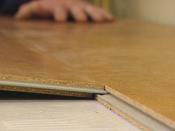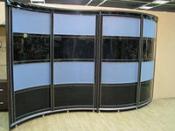Search
Login
Recommended
Gas boiler heating in a private house, cleaning the boiler from soot, useful tips
The dream of every home owner is the uninterrupted operation of all engineering systems, and especially heating. Of course, at the same time, it is desirable that the maintenance of gas equipment is required to a minimum. But in order to ensure a calm and warm life under the roof of your own home, you still need to strictly observe some not difficult conditions, namely, conducting a routine inspection of the gas unit and performing minor repairs, if necessary. The most important tasks that will help add to the boiler’s life will be: cleaning the heat exchangers and removing soot.
Content:
- What is a gas boiler
- How to clean a gas boiler - flush the heat exchanger video
- How is the heat exchanger mechanically cleaned
- Chemical heat exchanger cleaning
- Soot boiler cleaning video
- Chimney cleaning
- Mechanical soot removal video
- Why install condensate collectors
What is a gas boiler

By design, a gas boiler is a combination of several diverse devices:
- a heat generator in which thermal energy is generated by burning fuel, consisting of a combustion chamber and a burner,
- a heat exchanger in which heat energy is transferred to a heat carrier, which is usually used water, antifreeze or air,
- the enclosure in which the above details are enclosed,
- a special regulatory device with which the fuel supply activity is controlled,
- chimney.

To ensure high boiler efficiency, you will need to systematically clean:
- soot firebox and chimney,
- heat exchanger - from scale.
Each type of cleaning should be carried out according to certain rules, the question of how to clean gas boilers should be considered in more detail.
How to clean a gas boiler - flush the heat exchanger

The heat exchanger is a system of pipes designed to move the coolant at the stage of its heating. Since water, which is used as a heat carrier, is usually not sufficiently purified from impurities of different salts, scale deposits on the inner walls of pipes over time, the diameter of the tubes decreases as a result, and the velocity of the coolant becomes lower. In addition, scale becomes a kind of barrier that reduces the thermal conductivity of metal fragments. All these negative aspects lead to serious consequences - a sharp decrease in the temperature of the coolant in the system.

In case of untimely flushing of the system, preconditions for a serious accident may arise, including:
- overheating of the boiler, as scale will impede proper cooling of the coolant which, during the reverse movement, should lower the temperature of the internal parts of the heating elements,
- breakdown of parts that may occur as a result of increased loads on the circulation pump (which may be caused by narrowing of contaminated pipes),
- increase fuel consumption.
The fight against scum can be done in several ways:
- water pumped into the system under high pressure,
- using chemicals
- mechanically.
The first method, due to its complexity (a special compressor will be required to create a pressure of tens of atmospheres) is acceptable if a team of specialists performs the work. The second and third are quite possible to produce independently.
The difficulty of mechanical and chemical cleaning will be the need for complete dismantling of the heat exchanger, this work will require certain knowledge and skills.
How is the heat exchanger mechanically cleaned
First of all, it should be remembered that the heat exchanger has a rather large volume and is located directly above the combustion chamber, while trying to get to it some difficulties may arise.
In this regard, it is recommended to adhere to the following order of work:
- First, disconnect the electrical wiring (if any) from the boiler and the gas supply pipes.
- Disconnect the heat exchanger from the heating system.
- Remove heat exchanger fasteners.
- Remove the heat exchanger from the boiler and proceed with cleaning it.

The field of how the heat exchanger will be removed, you can see how thick deposits are on its walls, you can use pins, scrapers, etc. to remove them. instruments. Care must be taken when performing work - otherwise the walls of the heat exchanger may be damaged.
It is more rational to perform mechanical cleaning after pre-soaking the part in a weak acid solution - this will lead to softening of the scale and it will be much easier to remove it.
Upon completion of the process, it is advisable to connect the heat exchanger to a source of running water - when the liquid passes through its internal cavities, a large amount of dirt will be washed out of them. Flushing can be completed when the flowing water is clear. The washing process will be accelerated by tapping the walls of the heat exchanger with a rubber or wooden hammer.
Chemical heat exchanger cleaning
To perform chemical cleaning of the heat exchanger, a special device is required - a booster. Although the dry cleaning process itself is not difficult, it is advisable to familiarize yourself with the recommendations of specialists before starting work.

It is not necessary to completely remove the heat exchanger; two nozzles should be disconnected, a hose should be connected to one of them, the washing solution will be supplied through it. The supplied fluid will exit through another nozzle and, through a hose connected to it, will flow into the booster. This connection will ensure the movement of the reagent in a circle.
Experts recommend choosing a booster equipped with an electric heating element. It will allow heating the chemical composition, increasing the temperature of the reagent will increase the washing efficiency and accelerate the destruction of the deposited salts.
Chemical reagents can serve as various solutions sold in hardware stores. Nevertheless, the choice of the product should be carried out taking into account the degree of contamination and the composition of the deposits; recommendations should not be ignored as to which materials can be used for cleaning.
The composition of cleaning agents most often includes acids:
- sulfuric or hydrochloric,
- less often - phosphoric or nitric.
Such reagents can easily remove dense deposits of large thickness, including layers of trivalent iron. To remove small impurities, you can use solutions of weaker acids: sulfamic or adipic. If desired, you can use special gels, before use they are diluted with water.
Soot boiler cleaning
Natural gas, which is used to heat residential premises, is a relatively clean product. However, during its combustion, the release of heavy components of oil products is observed, namely they contribute to the formation of a black layered film on the surface of the heat exchanger and combustion chamber. such a film significantly reduces the thermal conductivity of the metal parts of the boiler i.e. helps to reduce its effectiveness.
Since only the external parts of the units will require cleaning, cleaning the boiler with your own hands will not be so difficult. First you need to determine the thickness of the soot layer:
if it does not exceed 2 mm, then you can use a scraper or a damp sponge to remove it,
if the layer is thicker, then the use of chemicals will be required, the best option is acid-containing compounds.
Chimney cleaning

An equally important measure is the removal of soot from the chimney. There are many ways to solve this problem - because our ancestors, who used stove heating for heating their houses, had to do this for many centuries in a row.
Modern chimneys, in accordance with the rules, must be made of stainless steel capable of withstanding the effects of high temperature and acid precipitation, which are formed during the combustion of natural gas. Sometimes they resort to installing a ceramic chimney, but with their high quality characteristics, ceramic models do not yet constitute a worthy competition for metal. Regardless of the type and material of manufacture, chimneys are designed to improve traction. The accumulation of soot on the inner walls of the chimneys reduces draft, and therefore worsens the working condition of the boiler.
You can determine the amount of soot accumulated by analyzing the frequency of the boiler: its constant use will contribute to its rapid accumulation. In this case, the gas boiler must be cleaned of soot, as well as a chimney, at least twice a year.

The temperature of the environment is influenced by the concentration of acid condensate - the lower it is, the more active the formation of sediment that is harmful to pipes.
Severe soot clogging threatens:
- thinning of the smoke hole, reduction of draft and smoke emission can create conditions in the house that are hazardous to human health (suffocation from carbon monoxide poisoning may occur),
- since soot is flammable, the possibility of a fire will be very real.
If you do not know how to clean the gas boiler and remove soot from the chimney, then it is best to contact the professionals - they will perform the work efficiently and in a short time.
Mechanical soot removal

If you decide to do everything yourself, you will need to purchase the appropriate tools for cleaning chimneys:
- hard brushes
- scrapers, other rigid devices for mechanical cleaning.

The most effective way to date is cleaning with a special vacuum cleaner. Accumulated in any quantities, dirt is quite easily removed through a special pocket. The included device, drawing in air, removes all accumulations on the pipe walls, leaving it intact and clean.
Experts consider a special vacuum unit to be the ideal cleaning unit, it is able to remove dirt of any composition in any quantities, but professionals usually use it - the cost of such a unit is within 100 thousand rubles.

Doing the work yourself, you can use all kinds of brushes or brushes, but you should not forget that their diameter should slightly exceed the diameter of the pipe. A very thick layer of soot can be removed with a scraper, then thoroughly treat the pipe with brushes or a brush. Of course, you can carry out such events yourself. Nevertheless, at least once every few years it is advisable to call a master who can really assess the condition of the pipe and determine if there are flaws in it if they appear.
The chimney can also be cleaned from the outside by lowering the brush on the transformer handle inside, the structure should be weighted with a plumb line. Under its action, the brush will move down more actively, cleaning the walls of the pipe will accelerate. The fallen soot is removed from the chimney through a special pocket, using a small scoop or vacuum cleaner.

Dry cleaning of chimneys for gas boilers is rarely used, this method is more acceptable for wood stoves and fireplaces. If gas is used as fuel, then most likely it will be necessary to pay attention to the fight against condensate.
Why install condensate collectors
As we have already mentioned, coma soot during the combustion of gaseous fuels forms acid-containing precipitation, which can have a detrimental effect on the material from which the chimneys are made.

The installation of special devices - taps and condensate collectors allows you to get rid of acid-containing vapors and completely protect chimney pipes from destruction. Today, technologists are actively developing more efficient methods for the removal of acid condensate, which will allow uninterrupted operation and extend the life of chimneys.





